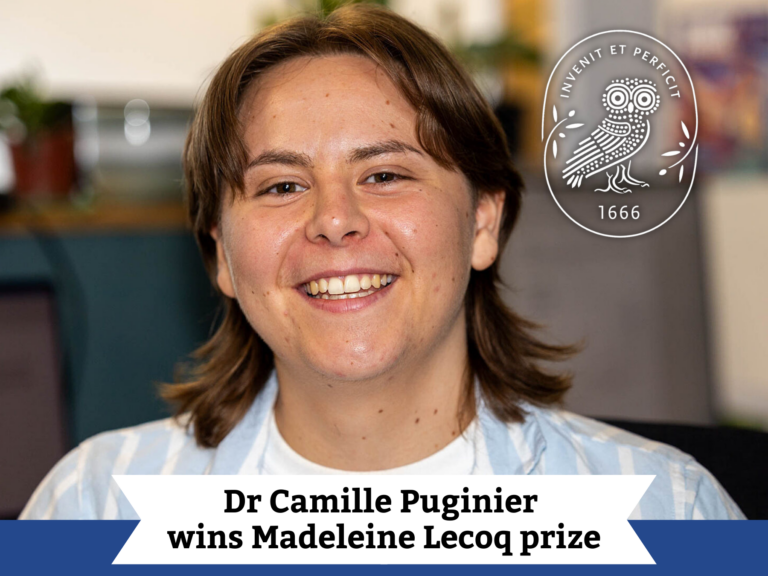Two triggers required for full activation of plant immunity
Oligomerisation of a plant helper NLR requires cell-surface and intracellular immune receptor activation
A study published by Joanna Feehan and colleagues from the Jonathan Jones group and from the Max Planck Institute for Plant Breeding Research sheds light on the mechanism behind Pattern Triggered Immunity enhancing plant cell death upon Effector Triggered Immunity.

Plants have powerful mechanisms that reduce disease and stop disease-causing pathogens from entering their cells, but for effective immunity defence must be activated quickly. This depends on successful recognition of the pathogen which is achieved by both cell surface and intracellular immune receptors that detect pathogen-derived molecules . Surface receptors activate “Pattern Triggered Immunity (PTI)” and intracellular receptors activate “Effector Triggered Immunity (ETI)”.
Two years ago, researchers in the Jonathan Jones group at The Sainsbury Laboratory discovered that these two distinct activation pathways for plant immunity depend on each other. Concerted activation of cell-surface (PTI) and intracellular (ETI) receptors enables strong defence against pathogens that culminates in a localized host cell death response. This self-destruction mechanism of plant cells is a highly effective plant defence that stops pathogens in their tracks.

Now, a study published by Joanna Feehan and colleagues from the Jonathan Jones group and from the Max Planck Institute for Plant Breeding Research sheds light on the mechanism behind PTI enhancing cell death upon ETI.
Plant cells carry multiple and diverse immune receptors which recognize pathogen effector proteins within their cells. These receptors are usually nucleotide-binding, leucine-rich repeat (NLR) proteins. NLRs are classified as either sensor NLRs, involved in effector detection, or helper NLRs required for sensor NLR signalling. In the model plant Arabidopsis, it was found that TIR-domain-containing sensor NLRs (TNLs) require helper NLRs NRG1 and ADR1 for resistance, and that their activation of defence also requires the lipase-domain proteins EDS1, SAG101 and PAD4.
In an earlier article published in 2021 which was led by Max Planck co-authors, Jane Parker and Xinhua Sun, the researchers investigated how helper NLRs and lipase-like proteins associate in plants to activate immunity. They discovered that NRG1 and ADR1 form two distinct signalling modules with the EDS1-family members of proteins, EDS1-SAG101 or EDS1-PAD4, respectively. They also found that the association between NRG1 with EDS1-SAG101 only occurs upon effector recognition (ETI) by the sensor TNL NLRs.
The helper NLR, NRG1, is essential for TNL-mediated cell death via this mechanism involving EDS1 and SAG101, but it remained unclear how the induced complexes then function to activate cell death. Increasing evidence suggests NLR activation results when the proteins are induced to self-associate and form oligomeric “resistosome” complexes that unlike the monomer form, can activate defence.

Model of molecular events leading to generation of an Arabidopsis EDS1–SAG101–NRG1 signalling complex essential for TNL receptor-activated defence. NRG1–EDS1–SAG101 association is dependent on TNL activation and requires an intact EDS1–SAG101 heterodimer EP domain cavity (purple circle) and NRG1 nucleotide-binding domain. EDS1–SAG101–NRG1 assembly precedes and is necessary for TNL-triggered cell death and resistance involving a predicted NRG1 N-terminal HeLo domain α-helix. Image from Sun et al. 2021
In the newly published study, Joanna and colleagues show that while ETI alone can induce NRG1-EDS1-SAG101 heterotrimer formation, both ETI and PTI activation are required for formation of an NRG1 resistosome.

Although intracellular activation (ETI) is sufficient for NRG1 to form heterotrimers with EDS1 and SAG101, an unknown PTI activation-dependent mechanism is required for the in vivo assembly of a putative NRG1-EDS1-SAG101 resistosome.
The authors also revealed sub-cellular compartmentalization of the different NRG1 complexes, with EDS1 and SAG101 associations occurring at the plasma membrane and in the nucleus. The authors speculate that TNL-triggered cell death and transcription mediated by NRG1-EDS1-SAG101 may be carried out by distinct complexes that are spatially separated within the cell: oligomeric resistosomes at the plasma membrane and heterotrimers in the nucleus.
The findings of this study suggests that PTI is required for TNL-dependent cell death in addition to ETI in part because it potentiates formation of a high molecular weight NRG1-EDS1-SAG101 resistosome-like complex. This highlights the possible role of NRG1-EDS1-SAG101 complexes as a mechanistic link for PTI and ETI co-activation of plant defences.
As a core discovery about immunity, these findings are relevant to many, if not all, flowering plants and can inform the engineering of NLRs and the components required to develop robust disease resistance in agriculture.
Main author, Joanna Feehan, says “These findings reveal new insights into immune receptor activation mechanisms and prompt many new questions for future studies. What is the PTI mechanism required for NRG1 oligomer formation? Are NRG1-EDS1-SAG101 heterotrimers functional? Do other NLRs require PTI activation for oligomer formation? As these components and pathways are core to plant immunity, answering these questions will provide a more complete understanding of all plants and their biology."
Funding acknowledgements for research conducted at The Sainsbury Laboratory
Work in the Jones lab was supported by European Research Council Advanced Investigator grant “ImmunityByPairDesign" (Hee-Kyung Ann), Biotechnology and Biological Sciences Research Council Doctoral Training Partnership program (Bruno Ngou), and by Gatsby Foundation support to TSL (Joanna Feehan and Jonathan Jones).


